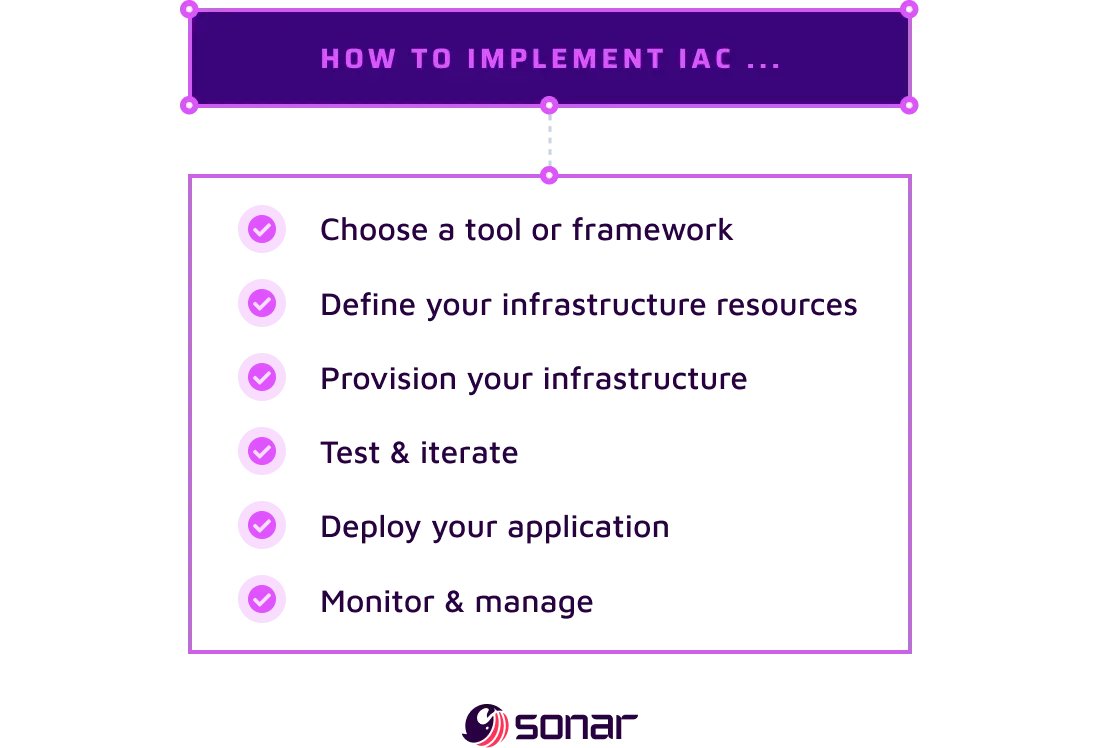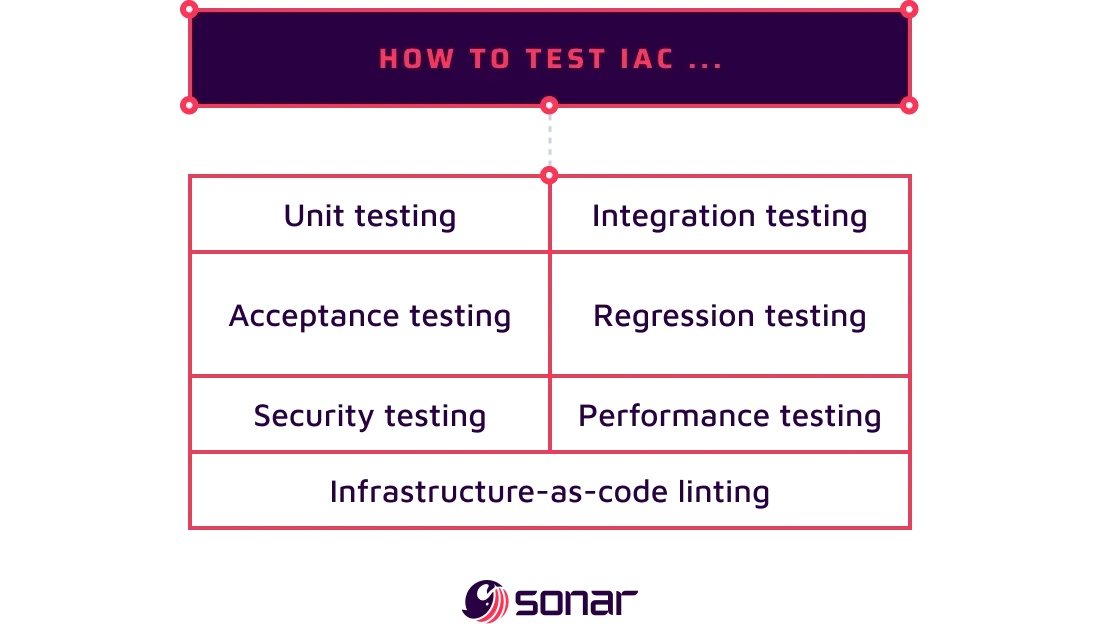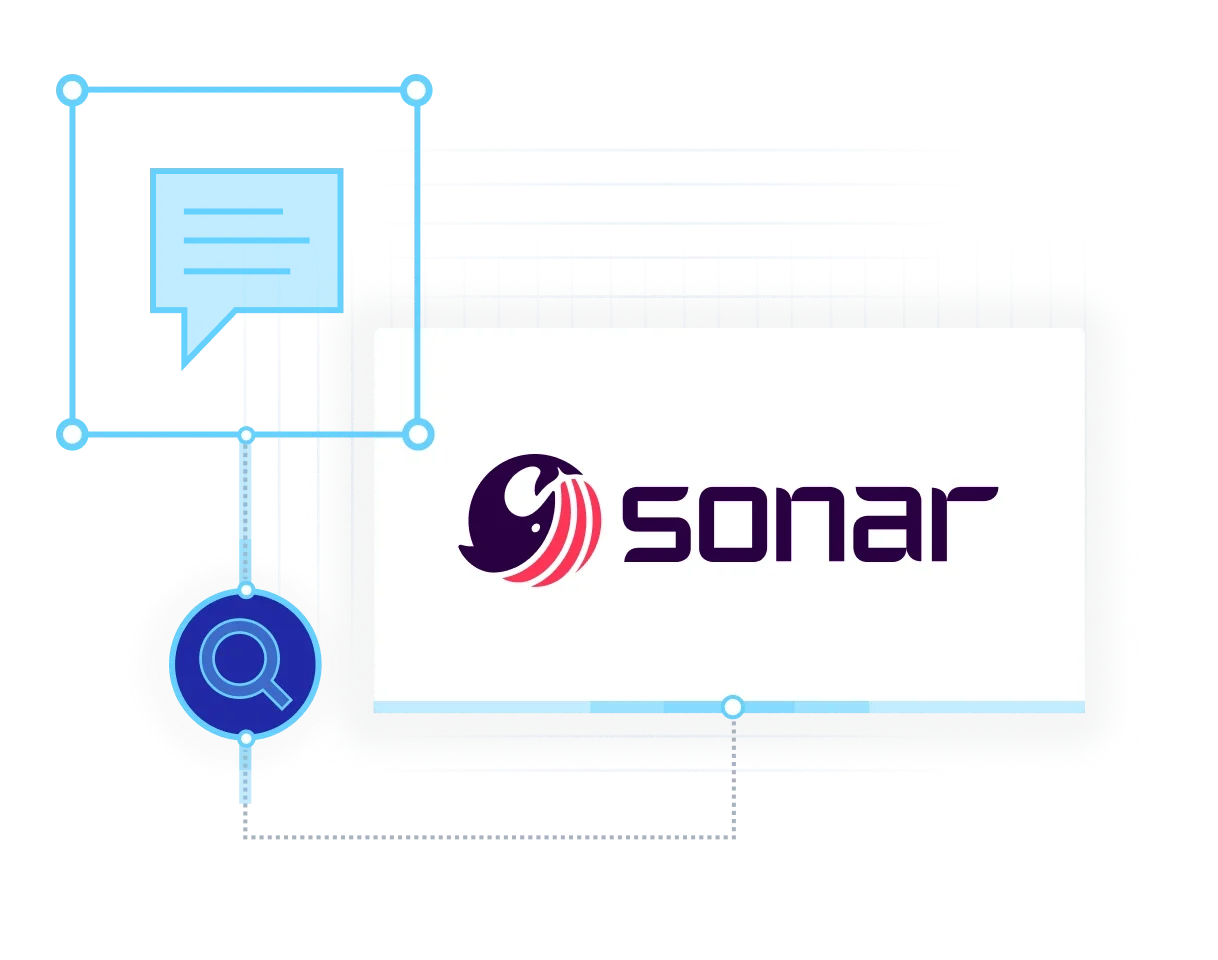Infrastructure as Code
Infrastructure code (also known as infrastructure as code or IaC) refers to the practice of defining and managing infrastructure resources in a programmatic way, typically using software development techniques and tools. With infrastructure code, you can automate the deployment, configuration, and management of your infrastructure, including servers, networks, storage, and other resources.
Infrastructure code provides a more efficient, reliable, and scalable way to manage infrastructure, by codifying infrastructure configuration as code that can be versioned, tested, and deployed using standard software development tools and processes.
What is infrastructure as code?
Infrastructure as code (IaC) is a development practice that allows you to define and manage infrastructure resources using code, just like you would with application code. This means that you can use familiar development tools and processes to automate the creation, configuration, and management of your infrastructure resources.
Traditionally, infrastructure was managed manually, with system administrators logging into servers and configuring them using command-line tools or graphical user interfaces. This approach can be time-consuming, error-prone, and difficult to replicate consistently across different environments.
To use infrastructure as code, you'll need to choose a tool or framework that supports this approach.
Once you've chosen your tool, you'll need to write code that defines your infrastructure resources.
This typically involves creating a configuration file or script that describes the resources you need, along with any dependencies or relationships between them.
You'll then use your chosen tool to deploy and manage your infrastructure resources.
This might involve running a command or script that provisions the resources, configures them according to your specifications, and sets up any necessary monitoring or logging.
Why infrastructure as code?
Infrastructure as code (IaC) is becoming increasingly popular among developers and for good reason. There are several benefits to using infrastructure as code. These reasons can encompass:

Increased speed and efficiency
Automating infrastructure management through IaC enables developers to rapidly deploy and update infrastructure.
This means that developers can spend less time setting up and managing infrastructure and more time writing and deploying code.
Consistency and reliability
With IaC, infrastructure is defined in code and can be versioned and tested, ensuring that the same infrastructure configuration can be reliably deployed across different environments.
Cost savings
IaC enables you to easily spin up and down infrastructure resources as needed, reducing the need for manual intervention and potentially saving costs.
Improved security and compliance
IaC allows you to define security policies, configure access controls, and set up monitoring and logging in a programmatic way that can be audited and tracked.
This reduces the risk of errors or inconsistencies that could lead to security vulnerabilities or compliance violations.
Better collaboration and version control
Because infrastructure configuration is stored as code, you can use version control tools to collaborate with your team and track changes over time. This allows for better collaboration and coordination among team members.
Increased scalability and flexibility
IaC enables you to easily provision and de-provision resources as needed, so you can quickly scale up or down to meet changing demands.
Compatibility and portability
With IaC, infrastructure resources can be defined in a vendor-agnostic way, making it easier to migrate between different cloud providers or on-premises environments.
Infrastructure as code provides a range of benefits that can help developers streamline their workflows, improve security and compliance, and increase scalability and efficiency.
Automating infrastructure management and defining infrastructure resources as code, developers can spend more time building and deploying applications, while minimizing the risk of errors or inconsistencies that can cause downtime or other issues.
How to implement infrastructure as code
Implementing infrastructure as code (IaC) involves several steps, including:

Choose a tool or framework
First, you'll need to choose a tool or framework that supports IaC. There are several options available, including Terraform, AWS CloudFormation, Ansible, Chef, and Puppet.
Each tool has its own strengths and weaknesses, so choose the one that best fits your needs.
Define your infrastructure resources
Once you've chosen your tool, you'll need to define the infrastructure resources you want to create and manage.
This typically involves creating a configuration file or script that describes the resources you need, along with any dependencies or relationships between them.
For example, you might define a server instance, a load balancer, and a database, and specify how they should be connected and configured.
Provision your infrastructure
With your infrastructure resources defined, you can use your chosen tool to provision them. This might involve running a command or script that provisions the resources, configures them according to your specifications, and sets up any necessary monitoring or logging.
Test and iterate
Once your infrastructure is provisioned, you'll need to test it to ensure that it's working as expected. This might involve running automated tests or conducting manual testing.
If any issues are identified, you'll need to iterate on your infrastructure configuration and re-provision your resources.
Deploy your application
With your infrastructure in place, you can deploy your application code. This might involve using a deployment tool or process that integrates with your chosen IaC tool.
Monitor and manage
Finally, you'll need to monitor and manage your infrastructure and application to ensure that they're running smoothly. This might involve setting up alerts, monitoring logs, and making adjustments to your infrastructure configuration as needed.
Implementing IaC requires a shift in mindset and processes.
By automating infrastructure management and defining infrastructure resources as code, you can spend more time building and deploying applications, while minimizing the risk of errors or inconsistencies that can cause downtime or other issues.
How to test infrastructure as code
Testing infrastructure as code (IaC) is an important step in ensuring that your infrastructure resources are configured correctly and will work as expected when deployed.
Here are some steps to consider when testing IaC:

Unit testing
Unit testing involves testing individual components of your infrastructure configuration in isolation. This might involve writing test scripts that check specific settings, dependencies, or relationships between resources.
Unit tests are typically automated and can be run quickly as part of a continuous integration and deployment (CI/CD) pipeline.
Integration testing
Integration testing involves testing your infrastructure configuration as a whole, to ensure that all components are working together correctly. This might involve deploying your infrastructure resources to a test environment and running automated tests that simulate real-world scenarios.
Acceptance testing
Acceptance testing involves testing your infrastructure configuration against a set of acceptance criteria, which might include performance benchmarks, security requirements, or compliance standards. Acceptance tests are typically conducted by stakeholders or customers to ensure that the infrastructure meets their needs.
Regression testing
Regression testing involves retesting your infrastructure configuration after making changes or updates, to ensure that existing functionality has not been affected. This might involve rerunning unit tests, integration tests, and acceptance tests, as well as conducting manual testing and reviewing logs.
Infrastructure-as-code linting
Linting is the process of automatically checking your IaC code for syntax errors, compliance issues, or other problems. This can be done using a linter tool or framework that checks your IaC code against a set of predefined rules or standards.
Security testing
Security testing involves testing your infrastructure configuration for security vulnerabilities or weaknesses. This might involve using vulnerability scanners, penetration testing, or code analysis tools to identify potential security issues.
Performance testing
Performance testing involves testing your infrastructure configuration under different loads or usage scenarios, to ensure that it can handle the expected levels of traffic or demand. This might involve using load-testing tools or frameworks to simulate realistic usage patterns.
By following these steps and implementing a comprehensive testing strategy, you can ensure that your infrastructure configuration is robust, reliable, and meets the needs of your stakeholders and customers.
IaC and DevOps
Infrastructure as code (IaC) is a critical component of modern DevOps practices. IaC is a method of defining and provisioning infrastructure resources using code, rather than manually configuring them.
This allows teams to automate infrastructure management and deployment, resulting in faster and more reliable software delivery.
DevOps is a set of practices and cultural norms that aim to break down the barriers between development and operations teams. DevOps teams work collaboratively to deliver software quickly and reliably, with a focus on continuous integration and deployment (CI/CD), automation, and monitoring.
IaC is a key enabler of DevOps practices, as it allows teams to:
Standardize infrastructure
By defining infrastructure resources as code, teams can ensure consistency across environments and eliminate manual configuration errors.
Automate deployment
IaC tools and frameworks allow teams to automate the provisioning and deployment of infrastructure resources, reducing the time and effort required to manage infrastructure.
Increase agility
By automating infrastructure management, teams can respond quickly to changes in requirements or demand, enabling faster delivery of software.
Improve collaboration
IaC code can be stored and versioned in source control, allowing teams to collaborate more effectively and track changes over time.
Enhance security
IaC tools can help teams implement security best practices, such as applying consistent security policies and configurations across environments.
In a DevOps environment, IaC is typically integrated into the CI/CD pipeline, allowing teams to automate the testing, deployment, and management of infrastructure resources alongside their application code.
This can involve using tools such as Jenkins, GitLab, or CircleCI to manage the pipeline, along with IaC tools such as Terraform, Ansible, or Chef to provision and manage infrastructure.
DevOps teams also typically use monitoring and logging tools to track the performance and health of their infrastructure resources, enabling them to identify and resolve issues quickly.
By combining IaC with DevOps practices, teams can streamline their software delivery processes, improve collaboration, and increase agility, resulting in faster and more reliable delivery of software.
Infrastructure as code tools
Infrastructure as code (IaC) can be written using a variety of tools and languages, depending on your infrastructure and your team's skills and preferences. These software tools and frameworks enable teams to define, provision, and manage infrastructure resources using code.
A short list of some popular IaC tools include:
Terraform
Terraform is an open-source tool that allows teams to define infrastructure resources using a high-level configuration language. It supports a wide range of cloud and on-premises platforms, including AWS, Azure, Google Cloud Platform, and VMware.
Ansible
Ansible is an open-source tool that uses declarative YAML files to define infrastructure resources. It is designed for automating IT tasks, including infrastructure management, configuration management, and application deployment.
Chef
Chef is an open-source tool that uses a declarative language to define infrastructure resources. It is designed for managing complex, distributed infrastructure environments, and can be used for automating tasks such as configuration management, application deployment, and compliance monitoring.
Puppet
Puppet is an open-source tool that uses a declarative language to define infrastructure resources. It is designed for managing large-scale, complex infrastructure environments, and can be used for automating tasks such as configuration management, application deployment, and compliance monitoring.
CloudFormation
CloudFormation is a tool provided by AWS that allows teams to define infrastructure resources using JSON or YAML files. It is designed to automate the creation and management of AWS resources, and supports a wide range of AWS services.
Azure Resource Manager
Azure Resource Manager is a tool provided by Microsoft that allows teams to define infrastructure resources using JSON files. It is designed to automate the creation and management of Azure resources, and supports a wide range of Azure services.
Google Cloud Deployment Manager
Google Cloud Deployment Manager is a tool provided by Google that allows teams to define infrastructure resources using YAML or Jinja2 templates. It is designed to automate the creation and management of Google Cloud Platform resources and supports a wide range of Google Cloud services.
Sonar
Sonar provides several tools for IaC to improve code quality and security.
SonarQube provides a comprehensive code analysis solution to scan your IaC files to review a wide range of possible issues or security vulnerabilities.
SonarCloud offers a cloud-based solution providing a central repository to store and analyze your IaC source code with automated scanning, code reviews and continuous integration into your workflow.
SonarLint is a free developer IDE plugin that gives immediate feedback on your code as you write.
These IaC tools provide a range of features and capabilities, including support for multiple cloud and on-premises platforms, declarative and imperative configuration models, and integrations with other DevOps tools such as CI/CD pipelines and monitoring frameworks.
Teams can choose the IaC tool that best fits their needs based on factors such as their infrastructure requirements, existing technology stack, and level of experience with IaC.
Conclusion
Infrastructure as Code (IaC) is a powerful approach to infrastructure management that enables teams to define, provision, and manage infrastructure resources using code. IaC solutions are designed to automate infrastructure management, reduce the time and effort required to provision and manage resources and improve the reliability and consistency of infrastructure environments.
IaC solutions typically involve the use of tools and frameworks such as Terraform, Ansible, Chef, Puppet, and CloudFormation, which provide a range of features and capabilities to support multiple cloud and on-premises platforms, declarative and imperative configuration models, and integrations with other DevOps tools such as CI/CD pipelines and monitoring frameworks.
Adopting IaC requires a shift in the way infrastructure is managed, as it involves treating infrastructure resources as code and applying best practices from software development to infrastructure management.
This includes using version control for infrastructure code, automated testing and validation of infrastructure changes, and peer review of code changes to ensure compliance with established best practices.
Overall, IaC solutions provide a powerful framework approach for managing infrastructure resources using code, enabling teams to automate infrastructure management, improve reliability and consistency, and reduce the time and effort required to provision and manage resources.
By adopting IaC, teams can achieve faster delivery of infrastructure changes, reduce downtime and improve infrastructure resilience, and achieve greater agility, scalability and security.



